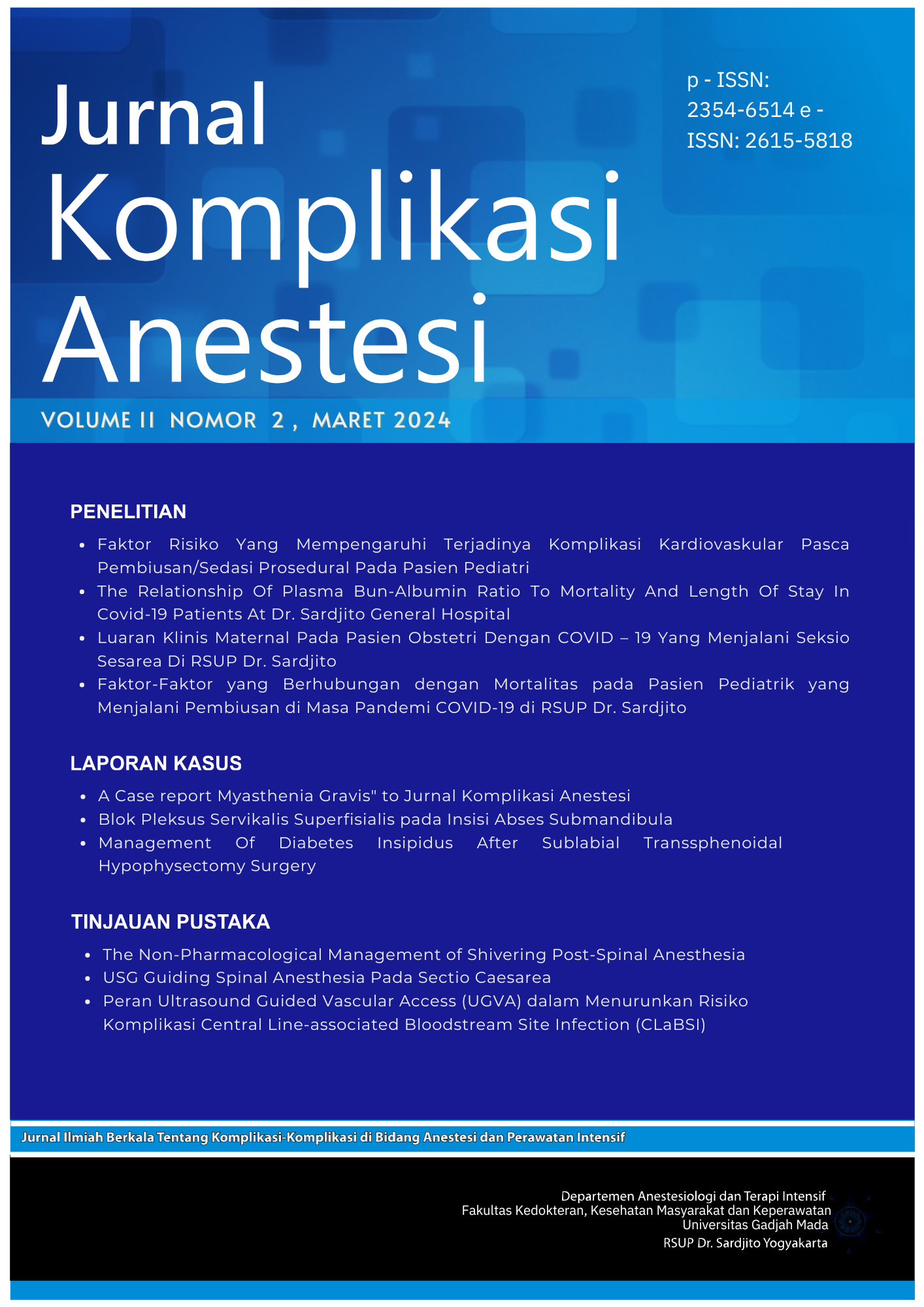Peran Ultrasound Guided Vascular Access (UGVA) dalam Menurunkan Risiko Komplikasi Central Line-associated Bloodstream Site Infection (CLaBSI)
Abstract
Central Line-associated Bloodstream Infection (CLaBSI) is a complication of infection that occurs when bacteria enter the bloodstream through a central venous catheter. CLaBSI is diagnosed by doctors through blood culture results and from the tip of the central venous catheter. Infections related to central venous catheters such as CLaBSI can lead to serious complications including sepsis, septic shock, and death. To reduce the incidence of CLaBSI, several prevention can be taken during central venous catheter insertion, one of which is using Ultrasound-Guided Vascular Access (UGVA) technique. This article aims to compare the effectiveness and safety of using the Ultrasound-Guided Vascular Access (UGVA) method with the landmark method in preventing Central Line-associated Bloodstream Infection (CLaBSI). The writing method used is literature review with keywords CLaBSI, USG guided, and central line catheter. The results show that the use of UGVA can reduce the incidence of CLaBSI to be two times lower compared to the landmark technique.
Copyright (c) 2024 Akhmad Yun Jufan

This work is licensed under a Creative Commons Attribution-NonCommercial-ShareAlike 4.0 International License.
The Contributor and the company/institution agree that all copies of the Final Published
Version or any part thereof distributed or posted by them in print or electronic format as permitted herein will include the notice of copyright as stipulated in the Journal and a full citation to the Journal.

















